Ornamental Plants: [Planting, Types, Irrigation and Care]
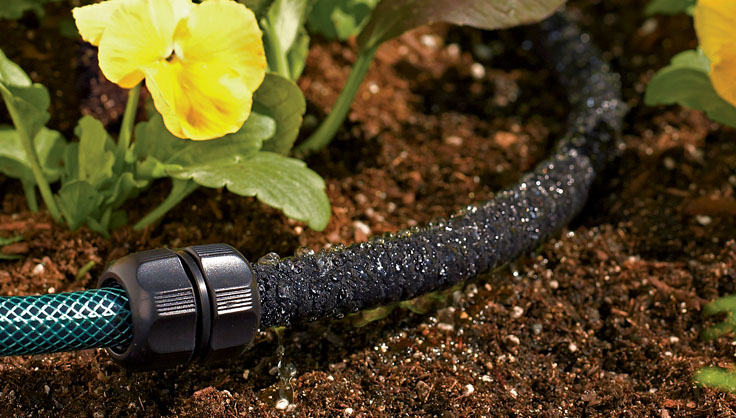
Ornamental plants are those that are grown for purely decorative purposes in interiors and gardens, as well as in architectural and landscape design projects.
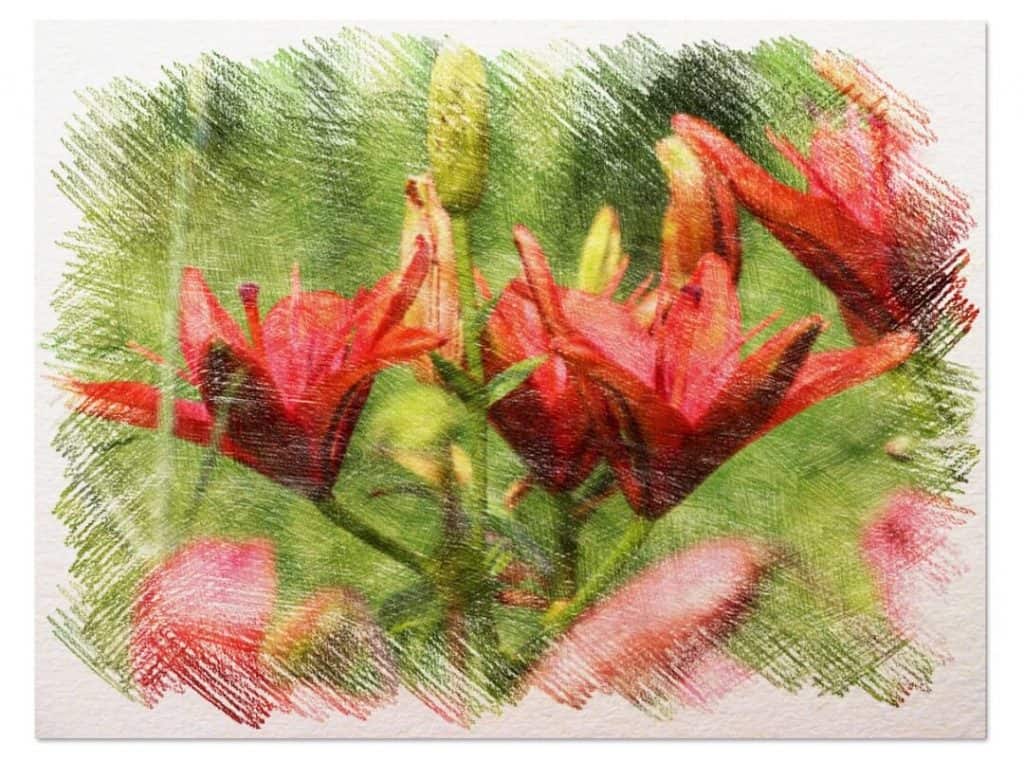 Its importance lies, mainly, in the improvement of our well-being and quality of life, enriching the environments in which we live, providing them with a pleasant aesthetic and that can even be considered asignificant cultural contribution.
Its importance lies, mainly, in the improvement of our well-being and quality of life, enriching the environments in which we live, providing them with a pleasant aesthetic and that can even be considered asignificant cultural contribution.
In fact, its importance is such that the market for ornamental plants has increased considerably throughout the world and the international demand for certain species has expanded rapidly.
In horticulture, the cultivation of flowers and ornamental plants representthe second segmentlargest in the industry.
As if this were not enough, the cultivation of ornamental plants also contributes to improving life on Earth.
So they not only improve the aesthetics of our homes and offices, but alsoenrich nutritional supportof thousands of species and make the planet greener.
[socialpoll id=”2653021″]
Ornamental Plants: [The 18 We Recommend]
Enhance the charm and elegance of your home, garden or office by growing one of the following ornamental plant varieties.
Take advantage of its multiple benefits and contribute, at the same time, to creating a greener planet.
Lavender
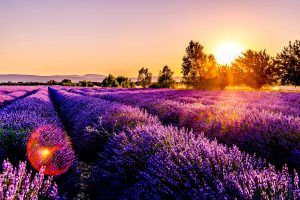 It is a very resistant plantthat requires a lot of light, although in winter it tolerates frost well.
It is a very resistant plantthat requires a lot of light, although in winter it tolerates frost well.
It adapts without problems to rocky areas and dry and clayey soils, as well as to pots and planters.
Also, it does not require much watering. Lavender adapts very well to a lack of moisture in the soil thanks to its deep root system.
gannet
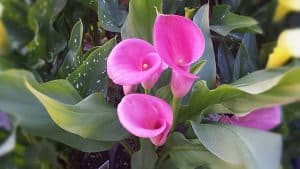 It requires a lot of light to flourish, but it is recommended that this be indirect. It adapts well to hot and cold climates alike, although we must ensure that it is not extreme, since it does not tolerate frost or excessive heat well.
It requires a lot of light to flourish, but it is recommended that this be indirect. It adapts well to hot and cold climates alike, although we must ensure that it is not extreme, since it does not tolerate frost or excessive heat well.
During its flowering, watering must be abundant, although it can be reduced during autumn and winter.
Petunia
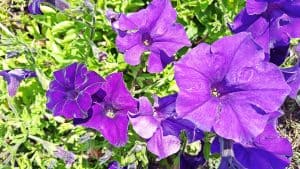 Petunia is one of the most popular flowers and one of themost recommended ornamental plants.
Petunia is one of the most popular flowers and one of themost recommended ornamental plants.
It blooms profusely and there is a wide variety of petunias in different colors, including black.
It likes a lot of direct sun and requires frequent watering. In summer, preferably, watering should be daily.
As for temperature, it prefers temperate zones protected from wind and rain.
It responds better if it is fertilized during the growing seasons.
camellias
The Camellia arrived in Europe more than 4 centuries ago, coming from the Asian continent.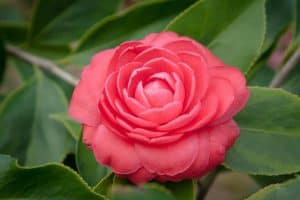
Camellias are so faithful to the display of their beauty that their stems with intense green leaves are able to bloom even when the winter period appears.
Fern
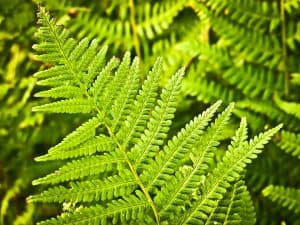 Another of the ornamental plants that adapts very well to the garden or inside the home.
Another of the ornamental plants that adapts very well to the garden or inside the home.
It is fast growing and reproduces very easily. It is important to keep yourleaves with ambient humidityso they don’t dry out.
As for irrigation, they must be constant and abundant.
Palms
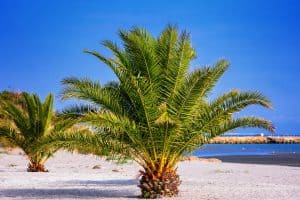 Palm trees are widely used in cities like Los Angeles or in Brazil.
Palm trees are widely used in cities like Los Angeles or in Brazil.
Palm trees grow in warm climates and are a very beautiful tree.
Of course, they have a lot of enemies and we have to be careful not to lose them.
Lily pads
It is an aquatic plant (like water lilies) that beautifies any pond that you have prepared for your garden.
The water lilies bloom at night, and at dawn they close. The water lily needs shallow water, and thanks to its rhizome, it develops without problems.
Coleus
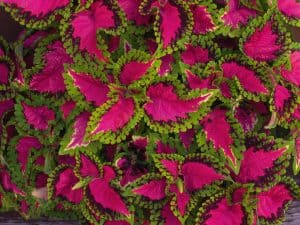 They are perennial plants native to Asia and Africa. They grow in tropical areas, so they require a lot of humidity and water.
They are perennial plants native to Asia and Africa. They grow in tropical areas, so they require a lot of humidity and water.
They can measure up to 1 meter, and the variety of colors of their leaves is spectacular.
They need a lot of sunlight and can not tolerate low temperatures (below 12 degrees can be lethal).
Verbena
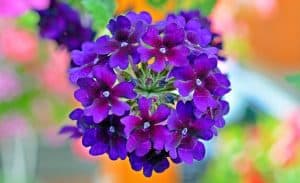 It is an ornamental plant that can also be used as an infusion and powder. They have health benefits, such as relieving headaches or promoting the absorption of food.
It is an ornamental plant that can also be used as an infusion and powder. They have health benefits, such as relieving headaches or promoting the absorption of food.
It is a herbaceous type plant, which grows in sandy, light and well-drained soils.
They usually form large groups of verbena plants of different species and different colors, which is very striking to the eye.
japanese maple
The Japanese maple, as the name says, is native to Japan and South Korea.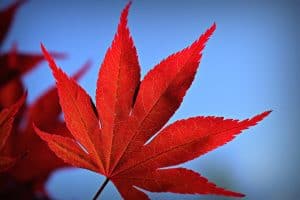
It is a kind of bush-type maple, which can reach 10 meters in height.
Japanese maple shows up in different ways in nature because planting from a parent tree can cause differences in traits, size, and color of leaves.
Azalea
The azalea is a plant of Japanese origin and of great beauty.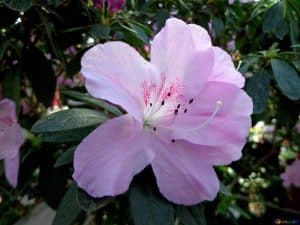
It is somewhat delicate, but knowing the soil and irrigation conditions that it needs to be planted and watching it grow in your garden should not be a problem.
Flower of the Passion
Passionflower, passion fruit plant or Passion Flower ( Passiflora caerulea),It is a climbing tropical species of American origin, but whose fame has spread impressively in the world for its spectacular fruit and the exotic flower that it has.
The flower can also be eaten hermaphroditic and solitary. Havegreat sedative medicinal powersand provides large carbohydrates with a high caloric level.
The Passiflora quadrangularis variety is one of the best known in Spain and the world.
It produces passion fruit, an edible fruit with an acid flavor that can be up to 30 cm long.
Oxalis Triangularis or Butterfly Plant
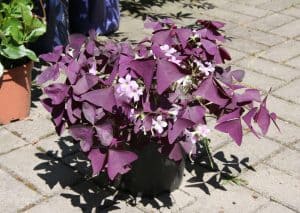 The oxalis triangularis is a clover plant that grows very fast when the right conditions are given.
The oxalis triangularis is a clover plant that grows very fast when the right conditions are given.
On the other hand, it is more comfortable indoors, since it does not support frost or high temperatures.
Cactus
The cactus is a type of tree widely used as an ornamental plant.
This is due to its enormous resistance to both drought and pests and diseases.
In addition, there are really beautiful cacti to decorate a garden.
Bamboo
Bamboo, typical of China, Japan or South Korea, is a tree that can also be considered ornamental.
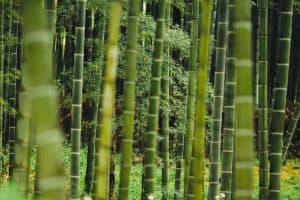 It takes time to start growing, but when it does, its explosion is surprising and in a short time it reaches incredible sizes.
It takes time to start growing, but when it does, its explosion is surprising and in a short time it reaches incredible sizes.
You will have to sow it during the spring and be patient. There are more than 1,000 species, so choose the one you like best.
hydrangeas
Hydrangeas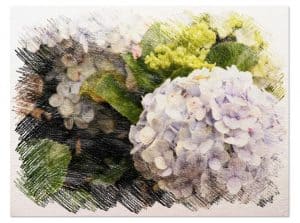 are one of my favorites.
are one of my favorites.
precious. Of course, they require the soil to be well moist and they are not resistant to cold. As well as they also need partial shade.
A little delicate, but if you manage to plant them and make them grow in your garden, spectacular.
Bougainvillea
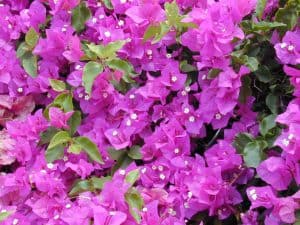 It is a very pretty evergreen climbing plant. It is also fast growing.
It is a very pretty evergreen climbing plant. It is also fast growing.
However, the problem with it is that it tends to get very dirty. Therefore, we recommend that you consider planting it in a place where you do not mind sweeping in winter (or do not need it).
Bull’s-eye
Here we have a legume.
This annual shrub can reach 15 meters in length. Its flowers and grains can be purple, lavender or white.
Be careful because it is a plant that can cause strong allergies.
lilies
Lilies are the 5th best-selling plant worldwide.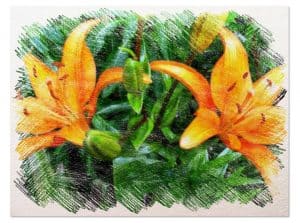
The reason? Because it is very pretty and prints beauty to any garden where it is planted.
In addition to that, it is tolerant of most soils and does not need excessive sunlight (it prefers semi-shade).
To know more: how to plant lilies.
Wisteria or Glycinia
A hanging and climbing shrub. It can get really big.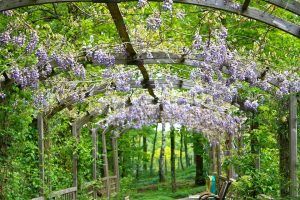
It takes time to flower if planted from seed. If it is done by cutting, it usually does it faster.
It is a climbing plant, whose flowers hang down and give an incredible purple color to any garden.
To learn more: how to plant wisteria.
Rhododendron
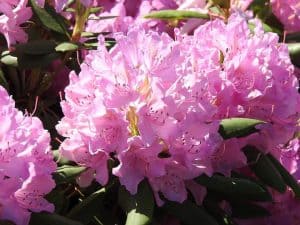 The rhododendron is a plant native to Nepal and the Himalayas.
The rhododendron is a plant native to Nepal and the Himalayas.
Although it has also spread throughout the world as an ornamental plant.
It is tremendously beautiful, although be careful not to consume its nectar or its leaves: they are very toxic to humans.
To know more: how to plant rhododendron.
begonias
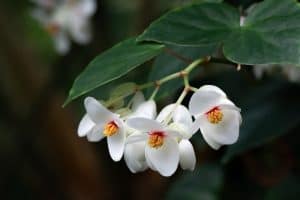 Begonias is a genus that has fifteen hundred species, of which one hundred and fifty are marketed throughout the world for use in gardening and because they are ornamental plants.
Begonias is a genus that has fifteen hundred species, of which one hundred and fifty are marketed throughout the world for use in gardening and because they are ornamental plants.
Its name is due to Charles Plumier, a French reference in botany, who wanted in that wayhonor Michel Bégon, a governor of the former French colony in Haiti.
begonias areflowers of impressive color and dazzling beautythat, among other things, are used for love, because the gift of a bouquet of begonias is proof of the feeling towards the person to whom it is conferred.
To learn more: how to plant begonias.
queen earrings
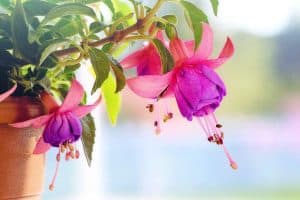 The queen’s earrings plant has been named for the structure of its flowers, which are elongated and hang from their stems.
The queen’s earrings plant has been named for the structure of its flowers, which are elongated and hang from their stems.
These flowers can be seen in different colors, fuchsia and purple being the most frequent, which is why in some areas it is known as Fuchsia, quivers or princess jumps.
It has the condition of being very striking and even more so if we take into account that it maintains its flowering structure until the beginning of winter.
To know more: sowing and care of the earrings of the queen
rose of alexandria
 The Alexandrian rose is a species of plant with very attractive ornamental characteristics. It offers lush and wonderful pink flowers.
The Alexandrian rose is a species of plant with very attractive ornamental characteristics. It offers lush and wonderful pink flowers.
There is no doubt that having a rose of Alexandria will add joy to any space in a garden, home or office.
This beautiful rose does not require much care, both in the garden and in pots.
Calibrachoa
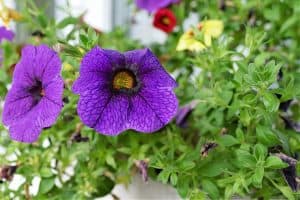 The Calibrachoa is a species of plant with a small size, but of great beauty that produces flowers of various colors, embellishing the place where it grows.
The Calibrachoa is a species of plant with a small size, but of great beauty that produces flowers of various colors, embellishing the place where it grows.
Due to its structure, many usually associate it with the petunia. However, they are two totally different species.
Having it at home will be a real pleasure because it has a very striking ornamental effect, either hanging or because of its creeping condition. In addition, it is capable of developing easily in wild land.
The holly
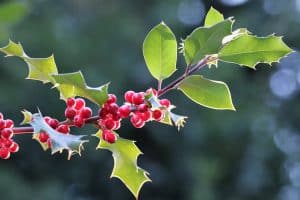 Holly is one of the most beautiful ornamental plants to have in the garden.
Holly is one of the most beautiful ornamental plants to have in the garden.
The contrast between its dark green leaves and the small bright red berries that are produced in winter, makes for a very striking image.
In addition, the shape of the leaves breaks with the common structure that we know and that adds an exceptional level.
the liverwort
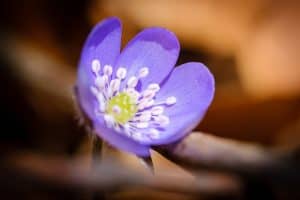 The agrimony is a plant that has been praised in the agricultural world for its healing potential and for being decorative at the same time.
The agrimony is a plant that has been praised in the agricultural world for its healing potential and for being decorative at the same time.
In addition, she is very grateful to those who try to cultivate it, since great efforts are not needed to have it ready every day.
Although it is known by a wide variety of names around the world, the name Agrimonia is the main one.
pomegranate
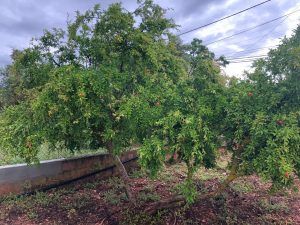 The pomegranate (Punica granatum) is a warm-climate tree that produces delicious-tasting fruits known as pomegranates.
The pomegranate (Punica granatum) is a warm-climate tree that produces delicious-tasting fruits known as pomegranates.
Its size is small and it is quite bushy in its structure of branches and leaves, which makes it a very interesting option; besides being considered an ornamental tree.
Canna Indica
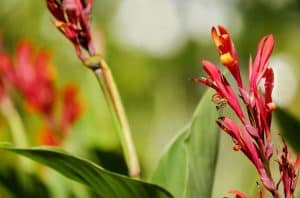 The Canna Indica is an edible and very beautiful plant, which is why it is used ornamentally.
The Canna Indica is an edible and very beautiful plant, which is why it is used ornamentally.
Its origin is in the American continent and it is of tropical origin, however the climatic and soil conditions in Spain have favored its cultivation.
It is a type of small-sized plant, which has very large and vividly colored leaves and flowers.
In the case of leaves, bright green is what prevails; while the flowers vary from red to yellow.
Washingtonia Robusta
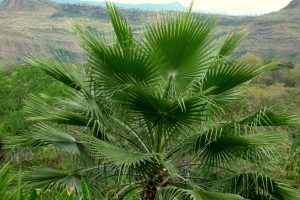 The Washingtonia Robusta (known as the Mexican Palm) is a palm -shaped plantthat grows very well in warm regions.
The Washingtonia Robusta (known as the Mexican Palm) is a palm -shaped plantthat grows very well in warm regions.
Its tall size allows you to enjoy good shade at your feet, which is why it is often used in some areas near the sea.
It has a rapid development, even from the fruiting of the seed, which makes it a fairly easy species to work with.
Viburnum Opulus
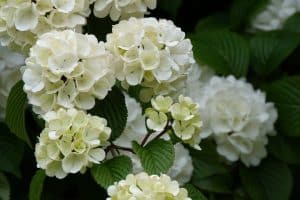 The Viburnum Opulus is one of the species with the highest ornamental value due to the structure produced by its snowball-shaped flowers.
The Viburnum Opulus is one of the species with the highest ornamental value due to the structure produced by its snowball-shaped flowers.
Being a bush, its height occupies a maximum of 5 meters, while the width does not go beyond 4 meters, which makes it an ideal option for your garden.
The plant known as Viburnum Opulus belongs to a large family of plants whose most interesting feature lies in its flowers. Because of the structure they produce, the Viburnum Opulus is also known as a snowball.
domestic nandina
The domestic nandina is an ornamental plant that has an average size of between 1 and 2 meters.[/su_note]
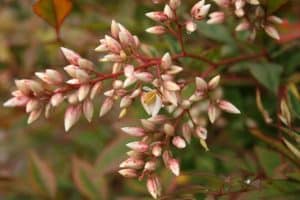 In some places it is known as sacred bamboo. It has peculiar colored leaves and, as its main name indicates, we can have it indoors.
In some places it is known as sacred bamboo. It has peculiar colored leaves and, as its main name indicates, we can have it indoors.
The domestic nandina is a species of the Berberidaceae family that has its origin in the Asian continent.
One of its main characteristics revolves around its leaves, which go through three color phases during their development.
Daisy flower
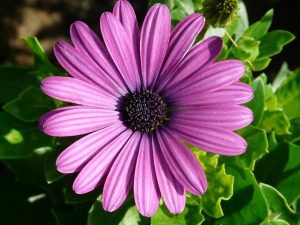 The daisy is a perennial and hybrid flower. It can also be considered a fast-growing and ornamental plant.
The daisy is a perennial and hybrid flower. It can also be considered a fast-growing and ornamental plant.
It is often used by gardeners as beginners because it is easy to cultivate and grow.
Daisies are usually white, but we can also find them in shades of yellow and purple, with a wide variety of petals surrounding the traditional yellow eye.
Some smaller varieties can grace the fronts of gardens, while others feature strong, attractive clumps of foliage that provide a backdrop for other flowering perennials in the garden.
Germanic Iris or Blue Lily
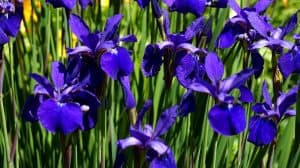 The Germanic Iris or Blue Lily is a highly resistant herbaceous plant that belongs to the Iridaceae family.
The Germanic Iris or Blue Lily is a highly resistant herbaceous plant that belongs to the Iridaceae family.
It is a typical species of central Europe. It is also known by the names of common lily, purple lily, purple lily, blue lily or Easter lily.
When do we grow it? It should be done in late spring and early fall.
It does not demand a very special land. Make do with fertile, well-drained, pH – neutral soils.
We can also consider it as an ornamental plant.
forsythia
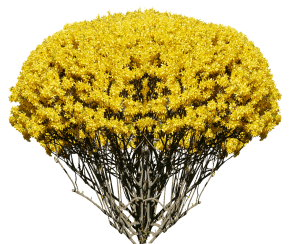 The Forsythia, Forsitia or Chinese Bell is a genus of deciduous shrubby plant, native to the Asian continent that has at least one variety from Southeast Europe.
The Forsythia, Forsitia or Chinese Bell is a genus of deciduous shrubby plant, native to the Asian continent that has at least one variety from Southeast Europe.
There are at least 11 official shrubby species that reach around 1 to 3 meters in maximum height, characterized by a remarkable early flowering, in early spring.
The flowers of this ornamental plant are very yellow and have a prominent lobed corolla, with petals that only grow at the base.
They are very popular in urban gardens and parks, especially the species Forsythia x intermedia and Forsythia suspensa.
agapanthus
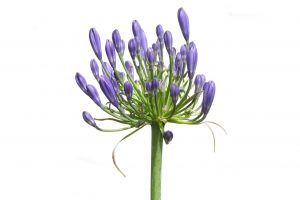 The agapanthus is an ornamental type plant that develops with beautiful inflorescences covered with white or blue flowers.
The agapanthus is an ornamental type plant that develops with beautiful inflorescences covered with white or blue flowers.
It is a very pretty flower because the flowers are arranged inside a balloon-shaped umbel. They produce a large number of flowers.
That is, the flowers do not appear individually throughout the structure, but grouped within the stems that grow and protrude from the plant.
This condition makes them prevail over other species when deciding to plant a beautiful plant that requires little care.
bear’s garlic
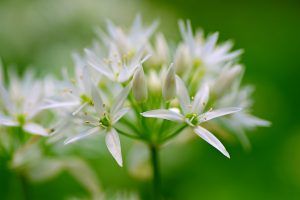 Very few vegetables are truly shade tolerant and as productive, versatile, and useful as bear’s garlic (Allium ursinum), also known as ramps or ramson.
Very few vegetables are truly shade tolerant and as productive, versatile, and useful as bear’s garlic (Allium ursinum), also known as ramps or ramson.
Allium ursinum is a perennial bulbous herbaceous monocot, which reproduces mainly by means of seeds.
Narrow bulbs form from the base of a single leaf and produce entire elliptic bright green leaves up to 25 cm long x 7 cm wide with a petiole up to 20 cm long.
crocuses
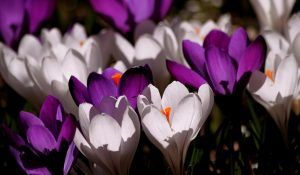 The crocus is a kind of plant that offers abundant flowering, in very striking colors. However, it is a fairly small plant.
The crocus is a kind of plant that offers abundant flowering, in very striking colors. However, it is a fairly small plant.
This condition leads ornamental designs within the garden to be based on several specimens gathered together, so that when they bloom they cause a great impact.
It is a plant that is worked by sowing through bulbs and that has specific development conditions, but not difficult to meet.
The Jacaranda tree
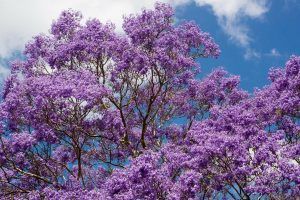
This lovely tree often spans the width of a front yard and is covered in beautiful lavender-purple flowers each spring.
Jacaranda mimosifolia is a subtropical tree native to south-central South America that has been widely planted elsewhere for its attractive, long-lasting purple and white flowers.
It is also known as jacaranda, blue jacaranda, black po

![Photo of Geranium Cuttings: [Concept, Period, Rooting and Planting]](https://www.complete-gardening.com/wp-content/uploads/2022/08/geranium-cuttings-concept-period-rooting-and-planting-390x220.jpg)

![Photo of Wormwood: [Cultivation, Irrigation, Care, Pests and Diseases]](https://www.complete-gardening.com/wp-content/uploads/2021/06/Ajenjo-390x220.jpg)
![Photo of Calateas: [Cultivation, Irrigation, Care, Pests and Diseases]](https://www.complete-gardening.com/wp-content/uploads/2022/08/calateas-cultivation-irrigation-care-pests-and-diseases-390x220.jpg)